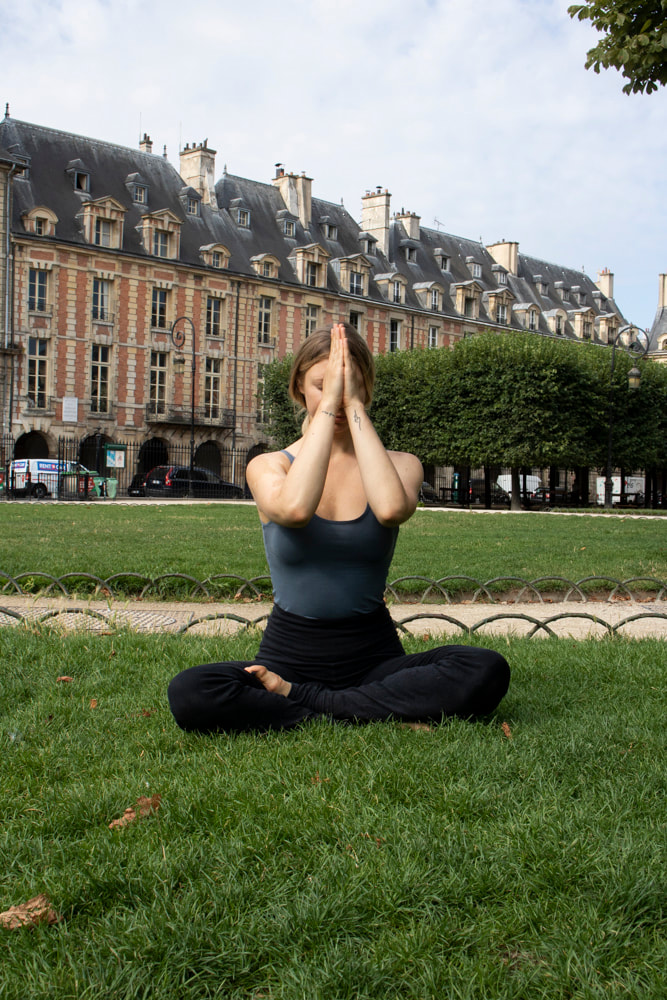|
Ingredients:
2 Cups of Cacao powder. 225 ml of coconut oil. 3/4 Cup of maple, guava or honey. Pinch of Himalayan salt. Berry protein powder. 5 Succulent chopped dates. Handful of Sunflower seeds. Handful of walnuts chopped. Method Create a bain-marie using two saucepans place the larger pan beneath the smaller pan adding enough water to hold the smaller pan with out the water moving up the sides and spilling over. This method surrounds food with a very gentle heat, warming delicate dishes such as making chocolate as we are doing here. Start by adding the coconut oil, once melted add the cacao and the rest of the ingredients taking your time as you mix each ingredient in, finally add the maple syrup, guava or honey to taste. Pour out the chocolate into moulds or on a baking tray and let the chocolate mix set. Keep refridgerated. The chocolate is so rich you will only need a small nugget DAILY! Benefits of Cacao 1. 40 Times the Antioxidants of BlueberriesI 2. Highest Plant-Based Source of Iron 3. Full of Magnesium for a Healthy Heart & Brain 4. More Calcium Than Cow’s Milk 5. A Natural Mood Elevator and Anti-Depressant
0 Comments
Ingredients:
1 lemon 1 Teaspoon of ginger 1 Teaspoon of honey. Hot water This is really simple to do and the benefits are very powerful.I particularly enjoy a shot before yoga and then make a flask to sip through the day. Studying Ayurvedic medicine in Regents College London back in the day the King & Queen of all herbs was ginger and almonds. Ginger has many benefits, including
MethodScoop out the flesh of one Avocado, crush two garlic cloves, small plum tomatoes quartered, inch of cucumber squared, 3 radish cut thinly, 1 tsp of raw white vinegar, olive oil, salt and pepper to taste, grated Parmesan cheese. Mix and drop onto full buttered sour dough toast. To poach the egg all you need is a fresh egg and you will never fail. Drop egg into simmering hot water leave for the amount of time to toast a piece of bread. Enjoy
Our Western society demands us being extremely result-oriented and productive. Every day our mind is working hard to find a solution to achieve the result. The non-achievement provokes stress, anxiety, frustration, confusion. We feel tired and hopeless to find a way to get to this final point. We are overthinking creating tension, stress but also procrastinating as we are scared to take responsibility for our decisions that could lead to a failure. Overthinking holds us back from moving forward and making progress. We get anxiety, stress without any result.
Come into any comfortable sitting position, close your eyes. Take a long inhale, and a long exhale. Long inhale and long exhale. Breath deeply and calmly. Today we will meditate to release stress and get rid of overthinking. I want you to focus now on a direct experience, a process, anything that makes you happy and joyful without any specific goal ahead. Like swimming or writing , painting or just walking enjoying beautiful landscapes or emptiness of the streets in the early morning. Observing sunset or sunrise, or listening to the music you like, drinking tea... Visualise yourself within this experience, without any thought about present, past or future , just enjoying every second of the moment. Breath calmly. Now think about anything you have to do today as of an experience, enjoying every step of it. Let go the results ! Breath calmly. According to Bhagavad Gita, we can find happiness and live our duty by focusing on labor and not on the fruits of our labor. Being focused on the work and not on the result gives us certainty, power of control. We have less mental tension and stress. Enjoy the journey of life, moving from one experience to another without any attachment, judgement or critic. Be kind to yourself. Keep breathing calmly. Please finish your meditation with the chant of three Om, join your hands in front of your chest in Atmanjali mudra (prayer position). Then gently open your eyes. The doshas are dynamic energies that constantly change in response to our actions, thoughts, emotions, the foods we eat, the seasons, and any other sensory inputs that feed our mind and body. When we live into the fulfillment of our individual natures, we naturally make lifestyle and dietary decisions that foster balance within our doshas. When we live against our intrinsic natures, we support unhealthy patterns that lead to physical and mental imbalances. Vatta Space & Air Pitta Fire & Water Kapha Water & Earth Ingredienets
Peeled almonds (rejuvenating), Pistachios (tonifying), Cashews (magnesium rich), Dates (strengthen liver, used to treat alcoholics!); Raisins (balance doshas). Method This drink is good at any time of the day or night! Soak nuts and dried fruit overnight or for at least two hours. Blend with ‘milk’ (or water used to soak) till chewy. Add rosewater, cardamon powder (sweet, calms, stimulates digestion) and saffron (cooling, tonifying, good for women, balances all doshas). Try ground fennel seeds (sweet, digestive, tones stomach) instead of saffron. You can add ‘sweetener’ according to taste though the dates are already sweet. GUIDED MEDITATIONS CYCLE :
I would love to share with you here a cycle of four guided meditations to release stress, let go all the fears, negative thoughts and emotions, rejuvenate your body and mind and leave space for self love. They all can be practiced in complete silence or accompanied with some relaxing or healing music, mantra, gong or nature sounds. Before to start the first one, let’s just think what exactly is meditation ? Is it relaxation or in the contrary hard exercise, permanently struggling with your thoughts and making efforts to concentrate ? Meditation is a process of learning about ourselves, connecting with our own spirit, it's a meeting point between our exterior self, our inner self and the whole world. Meditation is stillness, not only the visible one, related to our physical body sitting in one posture for a long time it’s also the invisible one, the stillness of our thoughts .. Chitta-vritti-nirodha .. Calmness of the fluctuations of the mind, according to Patanjali. By calming these mental fluctuations, the yogi opens up to experience union with the Divine, the Higher Self or the Absolute Reality. Among these fluctuations of the mind are desires and attachments, which can be to worldly objects, ideas or even relationships. Now, please sit in any comfortable sitting position, half lotus or full lotus, you can put a block or a blanket under your buttocks. Your wrists are on your knees in Jhana mudra (index and thumb joined together). You can stay in this meditation for ten-fifteen minutes or more depending on how you feel. Make sure you will not be disturbed during meditation. Take five long breaths, long inhales and long exhales. Keep breathing calmly. Today we will dedicate our meditation to the practice of letting go. Surrender and letting go our emotional luggage, our attitudes, thoughts, habits and labels that people have put upon us. It’s our attachement to those things that shape the way we are, the way we’ve been programmed to act and think. The practice of non-attachement is an opportunity to learn to let go because as long as we are connected and attached to our past we keep the door closed for our present and future. Now I want you to think about something that you would like to let go today, either it is a thought, an emotion or a person. Visualise it and let it go, let it disappear, vanish, become transparent. Let this something or someone you feel is holding you back from being joyful fade away. Image yourself to be perfectly happy without it. Either it is a thought, a habit or some memory. Image yourself being without it, just your true self, without any attachement. On the inhale repeat Let and on the exhale Go. Let it go. Let it go. Visualise yourself letting go everything to find freedom and joy. Keep breathing deeply. Long inhale say Let, and long exhale say Go. Please finish your meditation with the chant of three Om, join your hands in front of your chest in Atmanjali mudra (prayer position). Then gently open your eyes. IngredientsSalt to taste 3 Large peeled potatoes, halved. 15g root ginger 3 garlic cloves 2 large tomatoes 4 tbls vedgetable oil 1 tsp cumin seeds 1 tsp mustard seeds 1 large onion chopped 1/2 tsp turmeric 2 tsp ground coriander from seed 1 tsp ground cumin 1tspgaram masala 3/4 tsp chilli powder Bag of spinach Large handful of chopped coriander Method
Take a large pan of water and boil the potatoes in salt water until cooked cool and cut into cubes. Blend the tomatoes, garlic, and garlic together making a paste. Heat a large non stick pan add a little oil , add the cumin and mustard seeds once the cumin starts to become dark add the onion. Cook for a minute before adding the ginger garlic tomato paste, the ground spices and pinch of salt. Saute gently for a few minutes until the smells start to rise a sign always that the food is cooked. Add the potatoes remaining tomoato's, spinach and sprinkle with coriander. Serve with:
Ingredients1/2 Cup mashed avocado
1/2 Cup of sweet potato 1/2 Cup of creamy nut bitter (tahini, almond, cashew etc) 1/2 cup of dairy free chocolate chip cookies 2 tablespoons prune or maple syrup 1 tbsp & a few drops of liquid stervia 1/4 cup of coconut milk 3 tablespoons cacao powder pinch of Himalayan rock salt dash of vanilla paste (2 tsp of cornflower mixed to a past with water) Method Preheat oven to 160 C, and line a a tin suitable for making bars with either lining the tins with parchment paper or greased with coconut oil. Blend all ingredients except choco chips in a blender. when they are all mixed well, add the chocolate chips, and trasfer the mixture to the chosen containers tin. Use a spatular to level the mixture across the pan evenly, as it will be sticky and thick. Bake for 30 mins, leave to cool then serve. I like it with yogurt and maple syrup. Hatha YogaA Seven day Yoga & Meditation Retreat
This seven day journey through your body and mind in a beautiful landscape of Scotland will bring you awareness, full relaxation and joy. A balanced practice of dynamic and restorative yoga classes as well as daily meditation and yoga Nidra will nourish you with fresh energy, creativity and love that you will spread once you’re back home. During the retreat you will enjoy a wonderful program deeply opening your body and mind specifically designed for you by Melanie and Maria, both certified yoga teachers. Every day will be fulfilled with new experiences allowing you to discover your own beauty and power. Dates 2019 October: 7 nights Dates : Sat19th- Sat 26th October 2019 Come join Melanie with an artist background and Maria trained Russian Ballet dancer, both certified yoga instructors with UK Yoga Alliance for a 7 days retreat filled with Yoga, yummy Ayurvedic food and inspiring surroundings. This wonderful retreat will be held at www.westerauchrawcroft.com/yoga a small retreat centre. Situated in outstanding countryside in the loch side village of Lochearnhead in Perthshire Scotland. Loch Lomand and the Trossachs National Park. The environment and ambience encourages an open, safe, relaxed and intimate atmosphere which promotes learning and self-development. The many munroes, mountain rivers and lochs are all places to explore on your doorstep to retire you and views that will blow you away. Yoga There will be dynamic Vinyasa and Hatha sessions, gentle and restorative practices, Pranayama and Yoga Nidra, meditation, mantra chanting and healing gong baths to get your yoga fill. As well as all this some free time to enjoy the facilities which includes the use of paddle boards and not to mention the wonderful surrounding area that you will definitely want to explore, munroes lochs flora and fauna abundant on your door step. All are welcome including complete beginners and pregnant ladies. https://www.westerauchrawcroft.com/yogatherapies.html Ingredients2 x tsp of turmeric
1 tsp ginger 1/2 tsp cinnamon Pinch Black pepper 1 tsp Vanilla extract Desert spoon Prune syrup 1/2 Cup Coconut milk Boiling water. Method Add all ingredients together and bring all to simmer until nearly boiling. Whisk and froth finish by pour in to a mug large cup topping up with boiling water stir and relish each sip. Detoxes the body Boosts Immunity Protects Liver Tissue Cleanses and Purifies the blood Eases symptoms of coughs and colds Improves circulation Improves skin Prevents internal blood clotting Reduces bad cholesterol Reduces inflammationStimulates secretion of bile. WOW |
Gaia's Larder
Exploring life in the country, foraging free foods from field hedgerow and garden to plate. Archives
December 2020
Luxury B&B Lochearnhead in the Loch Lomand & Trossachs National Park
|














 RSS Feed
RSS Feed